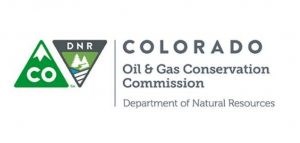This content was originally published by the Longmont Observer and is licensed under a Creative Commons license.
The Colorado Oil and Gas Conservation Commission (COGCC) regulates oil and gas activities throughout the state of Colorado.

To fulfill the requirements of Executive Order D 2018-12, an Annual Orphan Wells and Sites list was created. Executive Order D 2018-12 directs “Colorado Oil and Gas Conservation Commission (COGCC) to plug, remediate, and reclaim orphaned wells and sites and prevent future orphaned wells and sites,” states a press release by the Colorado State Department of Natural Resources.
Orphaned sites and wells are defined as facilities where there is not a third party to assist in cleaning up the sites. COGCC staff analysis resulted in a total of 275 orphaned wells and 422 associated orphaned sites awaiting action as of July 1, 2019.
Those sites were then placed into three priority levels: low, medium, and high. COGCC placed 83 (20%) as low-priority, 251 (59%) as medium-priority, and 88 (21%) as high-priority based on a number of risk factors including population density, environmental factors, years of service, and a history of leaking or venting.
"Our primary concern would be trespassers playing or hanging out or around wellheads and production equipment such as pump jacks, tanks, separation equipment, and sheds," says David D. Andrews, Orphaned Well Program Manager of the COGCC.
Plugging the sites usually requires a workover rig, a wireline truck, and a cement pump truck. Earthmoving equipment, trucks, and cranes are used for salvaging, environmental remediation, and surface reclamation. Much of the work can be done in one week or less. Vegetation regrowth is monitored and re-seeding is done as needed, until the site status is changed from "In Progress" to "Completed."
"The wells are shut in (valves closed to the atmosphere), so emissions are normally not a concern. Depending on proximity to the public, we may install signs, labels, or fences, and we may removed fluids form tanks and vessels before significant activity occurs at the site.
There are many reasons why wells become abandoned. The wells may have been voluntarily stopped due to financial distress or the COGCC may have revoked an operator's right to operate. Some wells have no identifiable owner and are under the COGCC's realm of responsibility.
“The COGCC has made significant progress in addressing and reclaiming orphaned wells and sites in Colorado over the last year,” said Jeff Robbins, Director Colorado Oil and Gas Conservation Commission, “Cleaning up and reclaiming these old sites back to their natural condition when possible is a benefit to local communities and the environment. They reduce what can be a safety hazard or address long simmering environmental impacts. The COGCC is committed to furthering winnowing down this list over the next few years and reclaiming more land to protect Coloradans public health, safety and environment.”
An updated progress report is expected by September 2, 2019 from the COGCC, as is required by the Executive Order.

.jpg;w=120;h=80;mode=crop)
